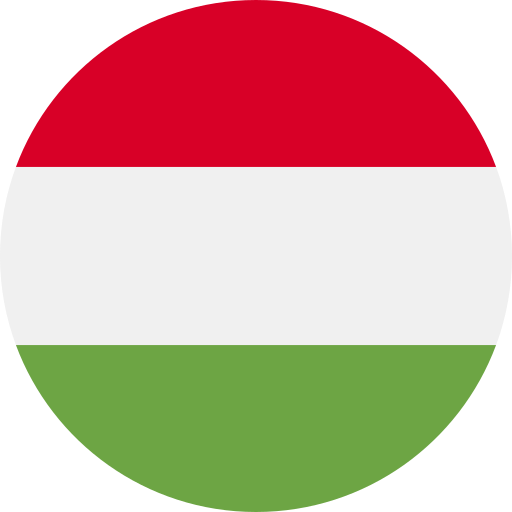Key Takeaways
- Diverse Hungarian Dialects: Hungarian dialects are categorized into Western, Eastern, and Northern groups, each with unique phonetic structures and vocabulary influenced by local culture and history.
- Cultural Reflections: Each dialect serves as a reflection of regional customs and traditions, enriching the overall understanding of Hungarian language and identity.
- Phonetic Variations: Differences in pronunciation among dialects—such as softer consonants in Western dialects versus sharper sounds in Eastern ones—highlight the linguistic diversity across Hungary.
- Historical Influences: Historical events like the Ottoman occupation and Austro-Hungarian interactions have significantly shaped the vocabulary and speech patterns found in various dialects.
- Identity Marker: Language plays a crucial role in community identity; different dialects foster local pride while also indicating social dynamics within various contexts.
- Enhanced Communication: Understanding these dialectal variations can improve communication effectiveness when interacting with native speakers or engaging in cultural exchanges.
Have you ever wondered why the same language can sound so different depending on where you are? When it comes to Hungarian dialects, those variations hold a treasure trove of cultural nuances and regional charm. From the melodic tones of Transdanubia to the distinct rhythms of Székelyföld, each dialect tells its own story.
Overview of Hungarian Dialects
Hungarian dialects showcase a rich tapestry of linguistic diversity across various regions. The main groups include the Western, Eastern, and Northern dialects, each presenting unique characteristics.
Western Dialects
Western dialects are spoken in areas like Transdanubia and their distinctiveness lies in vocabulary and pronunciation. You’ll find softer consonants and specific local terms that might not resonate with speakers from other regions.
Eastern Dialects
Eastern dialects, prevalent in parts such as Székelyföld, reveal a different phonetic structure. These variations often highlight historical influences and regional interactions that shape everyday conversation.
Northern Dialects
Northern dialects feature unique intonations and inflections, particularly around the northern mountains. They carry remnants of ancient Hungarian speech patterns, providing insight into Hungary’s linguistic evolution.
Influence on Culture
Each Hungarian dialect reflects cultural traditions and social nuances within its region. Understanding these differences enriches your appreciation for the language itself while offering deeper insights into local customs.
Exploring these diverse variations enhances communication effectiveness when interacting with native speakers or engaging in cultural exchanges.
Geographic Distribution
Hungarian dialects vary widely across different regions, each carrying unique characteristics shaped by local culture and history.
Regions with Distinct Variations
Eastern Hungary features the Eastern dialects, notable in Székelyföld. These dialects exhibit distinct phonetic structures, influenced by neighboring languages and historical interactions. In contrast, Western dialects dominate Transdanubia, known for softer consonants and regional vocabulary that reflects local customs. Northern dialects found around the northern mountains preserve ancient speech patterns, providing a glimpse into Hungary’s linguistic evolution. Each region contributes to a rich tapestry of Hungarian language diversity.
Influential Historical Factors
Historical events significantly impacted the development of these dialects. The Ottoman occupation introduced new words and phrases into Eastern dialects through trade and cultural exchanges. In Western regions, contact with German-speaking populations during the Austro-Hungarian Empire led to vocabulary adaptations that still resonate today. Additionally, migration patterns over centuries created a blend of influences that shaped pronunciation and grammar across all areas of Hungary. These factors illustrate how history intertwines with language to create vibrant regional identities within Hungarian speech.
Linguistic Features
Hungarian dialects exhibit distinct linguistic features that reflect their regional origins and historical influences. Understanding these characteristics enhances appreciation for the richness of the Hungarian language.
Phonetic Differences
Phonetic variations among dialects create unique sounds, contributing to a diverse auditory landscape. For instance, Western dialects often feature softer consonants, while Eastern dialects may include sharper phonemes influenced by neighboring languages. Northern dialects tend to preserve older speech patterns, resulting in a more archaic sound. These phonetic traits not only distinguish one region’s speech from another but also reveal cultural ties and historical connections.
Vocabulary Variations
Vocabulary differences among Hungarian dialects showcase local customs and lifestyles. Each region boasts words and phrases specific to its culture; for example, certain agricultural terms might be prevalent in rural areas of Transdanubia, highlighting farming practices unique to that zone. Eastern dialects incorporate vocabulary influenced by Romanian and Slovak languages due to geographic proximity. Such lexical diversity enriches communication within Hungary while illustrating how history and community shape language development.
Major Dialect Groups
Hungarian dialects showcase a rich variety that reflects the country’s cultural and regional diversity. Understanding these major dialect groups offers insight into how language evolves across different areas.
Western Dialects
Western dialects, primarily found in Transdanubia, display several unique features. You’ll notice softer consonants and specific local vocabulary that set them apart from other Hungarian variations. These dialects often incorporate words influenced by neighboring languages, resulting in a distinct linguistic flavor. For instance, the pronunciation can vary significantly between regions like Pannonia and Sopron, with each area having its own terms for everyday objects or concepts. The historical context of this region contributes to the richness of its speech patterns.
Eastern Dialects
Eastern dialects dominate areas like Székelyföld and are characterized by sharper phonemes and varied intonation patterns. These differences stem from historical interactions with neighboring countries, particularly Romanian and Slovak influences. Vocabulary choices also reflect local customs; for example, certain phrases may describe traditional practices unique to these communities. You’ll find that these dialects maintain a strong connection to their roots while adapting over time through cultural exchange.
Understanding these major groups enhances your appreciation for Hungarian language diversity and highlights the intricate interplay between geography and linguistic expression.
Sociolinguistic Aspects
Hungarian dialects reflect a rich sociolinguistic landscape shaped by regional identities and historical influences. These variations offer insights into the cultural fabric of Hungary, revealing how language intertwines with social dynamics.
Language and Identity
Language serves as a key marker of identity in various Hungarian communities. Different dialects embody local pride, heritage, and traditions. For instance, speakers from Székelyföld often emphasize their unique intonation patterns and vocabulary, reinforcing their cultural distinctiveness. When you listen to these dialects, you can sense the deep connection between language and community values. This sense of belonging can strengthen interpersonal relationships within regions as locals embrace their linguistic characteristics while interacting with each other.
Usage in Different Contexts
Dialect usage varies significantly depending on social settings. In informal contexts, such as family gatherings or local markets, you’ll encounter more localized expressions and slang that showcase regional nuances. Conversely, in formal settings like academic or governmental discussions, standard Hungarian predominates to ensure clear communication across diverse groups. Understanding these shifts can enhance your appreciation for the richness of Hungarian language use—it’s not just about words; it’s about context and audience too.
Exploring the sociolinguistic aspects of Hungarian dialects reveals how deeply intertwined language is with identity and social interaction across different contexts.
Conclusion
Understanding the variations in Hungarian dialects opens a window into the rich cultural tapestry of Hungary. Each dialect not only conveys unique linguistic features but also reflects the history and identity of its speakers. Whether you’re exploring the softer sounds of Western dialects or the sharper phonemes of Eastern ones, you’ll discover how language connects people to their roots.
Embracing these differences enhances your appreciation for regional customs and traditions, making your journey through Hungary all the more enriching. As you navigate this diverse linguistic landscape, remember that every word carries a story shaped by time and place, inviting you to delve deeper into Hungary’s vibrant heritage.
Frequently Asked Questions
What are the main groups of Hungarian dialects?
The main groups of Hungarian dialects include Western, Eastern, and Northern dialects. Western dialects are found in Transdanubia and feature softer consonants and unique local vocabulary. Eastern dialects, prevalent in Székelyföld, showcase sharper phonemes influenced by Romanian and Slovak languages. Northern dialects retain ancient speech patterns and are spoken around the northern mountains.
How do historical events influence Hungarian dialects?
Historical events significantly impact Hungarian dialects. For example, the Ottoman occupation introduced new vocabulary into Eastern dialects, while German-speaking populations during the Austro-Hungarian Empire influenced Western dialects. These interactions have shaped pronunciation, grammar, and local expressions over centuries.
Why are regional features important in understanding Hungarian language diversity?
Regional features reflect cultural nuances and social identities within Hungary. Each area has its own unique story to tell through its dialect’s vocabulary and pronunciation patterns. This diversity enriches communication and helps preserve local customs and traditions that define regional characteristics.
How do migration patterns affect Hungarian dialects?
Migration patterns have blended various linguistic influences across Hungary over centuries. The movement of people has resulted in shared vocabulary, altered pronunciations, and varied grammatical structures among different regions. These changes contribute to the evolving nature of language as communities interact with one another.
What role does social context play in using Hungarian dialects?
Social context greatly influences how people use Hungarian dialects. In informal settings, localized expressions may be more common among speakers who identify strongly with their region’s culture. Conversely, standard Hungarian is often used in formal situations to ensure clear communication across diverse audiences.







